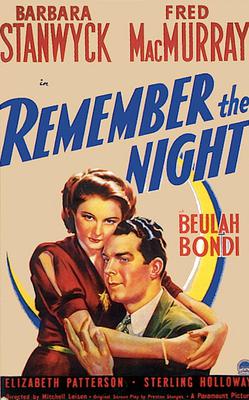A blog formerly known as Bookishness / By Charles Matthews
"Dazzled by so many and such marvelous inventions, the people of Macondo ... became indignant over the living images that the prosperous merchant Bruno Crespi projected in the theater with the lion-head ticket windows, for a character who had died and was buried in one film and for whose misfortune tears had been shed would reappear alive and transformed into an Arab in the next one. The audience, who had paid two cents apiece to share the difficulties of the actors, would not tolerate that outlandish fraud and they broke up the seats. The mayor, at the urging of Bruno Crespi, explained in a proclamation that the cinema was a machine of illusions that did not merit the emotional outbursts of the audience. With that discouraging explanation many ... decided not to return to the movies, considering that they already had too many troubles of their own to weep over the acted-out misfortunes of imaginary beings."--Gabriel García Márquez, One Hundred Years of Solitude
Search This Blog
Showing posts with label Mitchell Leisen. Show all posts
Showing posts with label Mitchell Leisen. Show all posts
Sunday, October 16, 2016
Easy Living (Mitchell Leisen, 1937)
Easy Living is one of my favorite screwball comedies, but I once had a nightmare that took place in the set designed by Hans Dreier and Ernst Fegté for the film. It was the luxury suite in the Hotel Louis, with its amazingly improbable bathtub/fountain, and I dreamed that we had just bought a place that looked like it and were moving in. I don't remember much else, other than that I was terribly anxious about how we were going to pay for it. Most of my dreams are anxiety dreams, I think, which may be why I love screwball comedies so much: They take our anxieties about money and love and work, like Mary Smith (Jean Arthur) worrying about how she's going to pay the rent and even eat now that she's lost her job, and transform them into dilemmas with comic resolutions. Too bad life isn't like that, we say, but with maybe a kind of glimmer of hope that it will turn out that way after all. Easy Living, with its screenplay by Preston Sturges, is one of the funniest screwball comedies, but it's also, under Mitchell Leisen's direction, one of the most hilarious slapstick comedies. How can you not love a film in which a Wall Street fat cat (Edward Arnold) falls downstairs? Or the celebrated scene in which the little doors in the Automat go haywire, producing food-fight chaos that builds and builds? The fall of the fat cat and the rush on the Automat reveal that Easy Living was a product of the Depression, anxiety made pervasive and world-wide, when we needed hope in the form of comic nonsense to keep us going. This is also an essential film for those of us who love Preston Sturges's movies, for although he didn't direct it, his hand is evident throughout, not only in the dialogue but also in the casting, with character actors who would later form part of Sturges's stock company, Franklin Pangborn, William Demarest, and Robert Greig among them. Ray Milland displays a Cary Grant-like glint of amusement at what's going on, Luis Alberni spouts Sturges's wonderful malapropisms as the hotel owner Louis Louis, and Mary Nash brings the right amount of indignation and humor to her role as Arnold's wife. I only wonder why Ralph Rainger and Leo Robin weren't credited for their title song, which is heard (though without its lyrics), as background music throughout the film.
Monday, February 1, 2016
Remember the Night (Mitchell Leisen, 1940)
Mitchell Leisen directed two films from screenplays by Preston Sturges. The first, Easy Living (1937), is one of the great screwball comedies, in which fat cat Edward Arnold throws his wife's fur coat out of their penthouse window and it lands on penniless Jean Arthur, who is riding by on the top deck of a double-decker bus. Wackiness ensues. But Sturges was so unhappy with what Leisen did with the other script, for Remember the Night, that he decided to direct his own screenplays for then on, resulting in one of the greatest of writer-director careers. He was, however, so delighted with Barbara Stanwyck's performance in Remember the Night that he created one of his best movies, The Lady Eve (1941), for her. Stanwyck and her co-star, Fred MacMurray, are in fact the best thing about Remember the Night, on which Leisen could never find the right handle. It starts as screwball comedy, with Stanwyck playing Lee Leander, a compulsive shoplifter whose theft of a bracelet lands her in court being prosecuted by assistant district attorney John Sargent (MacMurray). It is just before Christmas, and when the judge rules for a continuance until after the holidays, Sargent good-heartedly arranges for Lee to be released on bail rather than spend the holidays in jail. When defendant and prosecutor find that they are both from Indiana, he decides to give her a lift home. Naturally, they fall in love, and not so naturally, the movie falls to pieces. It devolves into a sentimental nostalgia piece, with a few good lines and some nice performances, particularly by Beulah Bondi as Sargent's mother, Elizabeth Patterson as his maiden aunt, and Sterling Holloway as his simple-minded cousin. But the problem is that they have to return to New York and she has to face him as prosecutor, not as fiancé. The Indiana scenes are preposterous: Sargent's family lives on a farm near a small town that seems untouched by the 20th century, a place without electricity where the chief amusements are taffy pulls and barn dances. It's possible that Sturges could have resolved all of this better than Leisen does, but the material needs a consistent touch that the director is unable to provide.
Subscribe to:
Comments (Atom)

